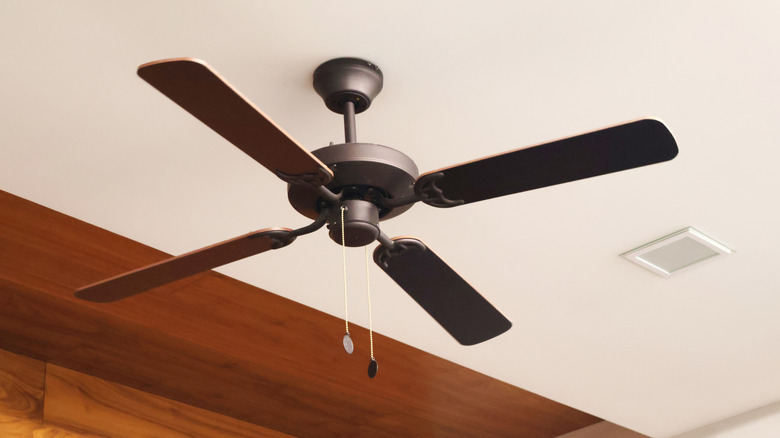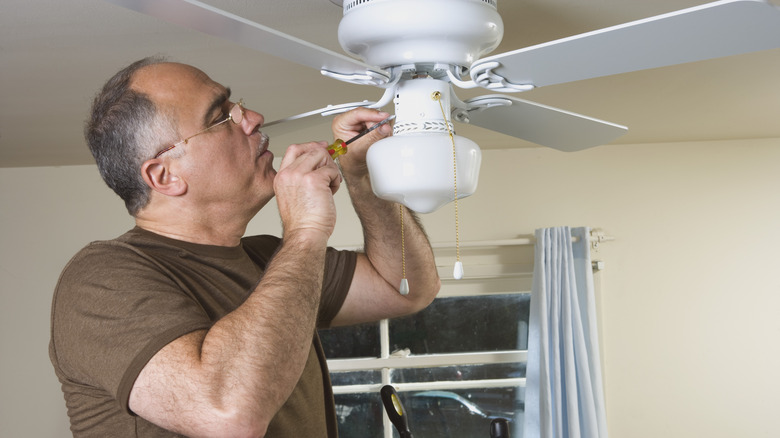What You Need To Know Before You Upgrade An Old Ceiling Fan
There are so many reasons why you'd want to upgrade an old ceiling fan. Maybe it's already sluggish and doesn't serve its purpose on a hot day, or it keeps making weird sounds that not even the WD-40 hack to silence a noisy ceiling fan can mute. But while a shiny new fan with modern features may seem like the ultimate fix, upgrading isn't always a breeze, especially if you want to avoid the mistakes people make when adding a ceiling fan to a room. For a purchase you won't regret, you'll need to know the size of your room and the ceiling fan.
Before you hit the store or scroll through online options, take a moment to consider whether you're choosing the right fan for your room. Making the ideal choice when it comes to modernizing an old ceiling fan involves familiarizing yourself with the measurements of both your room and the fan you intend to buy. Rushing into this purchase without proper preparation could leave you with a fan that's mismatched to your space or struggles to circulate air effectively, which could turn your cool goals into a hot mess.
Key considerations for choosing a new ceiling fan
Knowing the right measurements of your room and prospective ceiling fan is important, since this directly impacts the appliance's performance, as well as how the space feels in general. The first thing to do is get the square footage of your room, and this could be done by multiplying the length of the room by its width.
Getting this step right is crucial since your room's size dictates the diameter of the ceiling fan you need. A ceiling fan with a diameter of 29 to 36 inches is ideal for small areas up to 75 square feet, while fans measuring 36 to 44 inches are great for medium rooms up to 225 square feet. For larger spaces over 225 square feet, it's better to opt for a ceiling fan with a span at least 50 inches wide to achieve sufficient airflow. It's also important to know your room's ceiling height . A low-profile or flush-mount fan is ideal for ceilings around or less than eight feet high, while taller ceilings that are greater than 10 feet from the floor need fans to be installed with an extended downrod.
Choosing the right ceiling fan for your room is only the first step toward achieving satisfying temps. You also need to properly maintain your newly upgraded fan to ensure it is functioning properly. Regular maintenance includes keeping your ceiling fan dust free and also inspecting for any signs of wear, like unusual motor noises. Following these steps for proper care ensures your appliance not only looks great, but also keeps your home feeling comfortable all year round.

